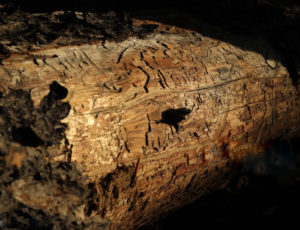The biology behind blue stain in beetle kill pine
Posted: March 14, 2014Updated on 1/11/2023
The Biology Behind What Causes Blue Stain In Pine
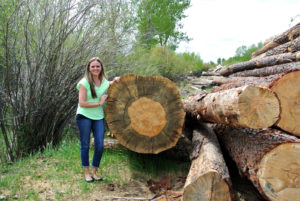 Many wonder what blue stain pine is and what causes it. To fully understand what gives our Beetle Kill Pine flooring and blue pine wall paneling their color, we need to look into the biological concept of symbiosis. The term symbiosis comes from the Ancient Greek “syn” — “with” — and “bíosis” — “living” — and is the close and often long-term interactions between different biological species. Often this interaction is obligate, in that neither can live without the other. One classic example is lichen, a combination of a fungus and green algae. The fungus provides housing (protection from the elements), and their food is made by the algae via the sun and its photosynthetic capabilities.
Many wonder what blue stain pine is and what causes it. To fully understand what gives our Beetle Kill Pine flooring and blue pine wall paneling their color, we need to look into the biological concept of symbiosis. The term symbiosis comes from the Ancient Greek “syn” — “with” — and “bíosis” — “living” — and is the close and often long-term interactions between different biological species. Often this interaction is obligate, in that neither can live without the other. One classic example is lichen, a combination of a fungus and green algae. The fungus provides housing (protection from the elements), and their food is made by the algae via the sun and its photosynthetic capabilities.
Blue-Stain Fungus in Pine Wood
The mountain pine beetle (MPB) and the blue-stain fungus is another excellent example of symbiosis. The blue-stain fungus travels from tree to tree on a special structure in the beetle’s mouth parts. This is its means to travel to new trees. The fungus helps the beetle by stopping the tree from producing its natural defense resin, and the beetles are hence able to mine and lay eggs while avoiding the tree’s defenses. The fungus also benefits the beetles by improving the host environment for the beetle progeny and serving as food for the larvae and adult beetles.
In a published study comparing beetle success in the presence and absence of fungi, the beetles were unable to reproduce in the absence of the fungi. Although the fungi alone can kill host trees, the combined action of the fungi and the beetles is responsible for the rapid death of the tree. So here we have a deadly combination.
According to the USDA, the mountain pine beetle and the blue-stain fungus have impacted trees more than 1200 miles of trails, 4,600 miles of road, and 47,000 acres of developed recreation sites over 6.3 million acres in Montana, Colorado, and southeastern Wyoming.
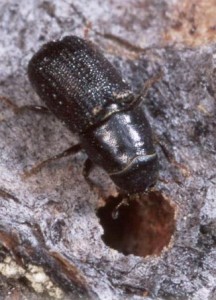
How Does The Pine Beetle Kill
Pine beetles kill trees by boring through the bark into the phloem layer on which they feed and in which eggs are laid. Female beetles initiate attacks, producing attractants that cause more beetles to come to the site, and then they stage a mass attack. If successful, each beetle pair mates to form a vertical tunnel (egg gallery) under the bark and produces about 75 small, white, oval eggs. Following the egg hatch, larvae tunnel away from the egg gallery. They require several months to develop, usually over-wintering as larvae. MPB larvae spend the winter under the bark and are able to survive the winter by producing an antifreeze. The great majority of beetles exit lodgepole pine during late July. One or more beetles will make an exit hole from which several adults will emerge. Within a day or two of emerging, the beetles will attack other trees.
Within about two weeks of a beetle attack, trees starve to death as the phloem layer is damaged by the fungus and beetles so that the flow of water and nutrients is cut off. After particularly hot summers, the mountain pine beetle population can increase dramatically, deforesting large areas.
Infested trees usually show pitch tubes that look like dark-red masses of resin mixed with boring dust that looks like fine sawdust. Needles on successfully infested trees begin fading and changing color several months to one year after the trees have been attacked.
Is the Epidemic Waning?
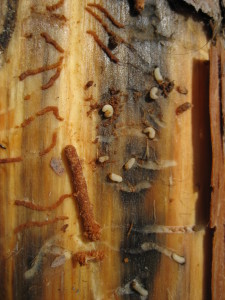
Unseasonably low temperatures may retard outbreaks. Early autumn or mid-spring temperatures of about 0 degrees F and winter temperatures below -34F may affect outbreaks. Beetles in thick-barked trees and in portions of tree trunks that are below the snow line, however, are protected from the cold and more likely to survive.
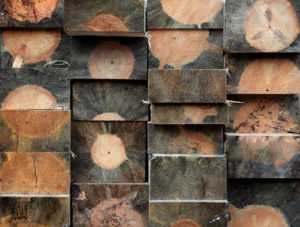
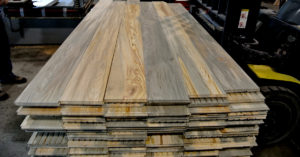
The Mountain Pine Beetle epidemic swept through Montana 10+ years ago. These dead trees are now rotting on the stump in the forest. We can only salvage approximately 35% of each tree, compared to salvaging over 90% ten years ago. Unfortunately, this product may not be available within a year.
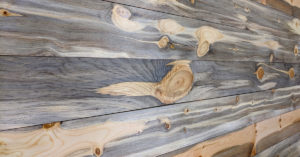
Our knowledgeable and educated staff is here to answer any additional questions you may have. Please call us today for a free quote: Ph# 406.642.7120 or click here to submit an inquiry online. We look forward to working with you on your next project!


